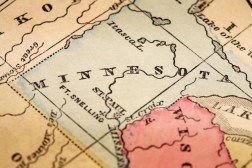Seven-state pilot aims to close the gap on 3D mapping data

Seven states are testing a set of guidelines for an ambitious project aimed at developing more accurate three-dimensional maps, the National States Geographic Information Council announced last week.
The council, which is comprised of state and local mapping officials and private-sector vendors, is creating the guidelines through a new project called “3DEP for the Nation.” The project is intended to create topographic maps that accurately represent the space taken up by natural and constructed features, and to help state agencies figure out where, exactly, they will get their elevation data as more places are mapped.
Three-dimensional mapping has a range of government applications, from urban planning to disaster recovery to resource management. It’s used widely by the National Resources Conservation Service, a U.S. Department of Agriculture agency that provides technical assistance to farmers and other landowners, to design drainage systems for crop fields. Transportation departments use it for planning road projects.
NSGIC launched the initiative in conjunction with the Federal Geographic Data Committee, an interagency group overseen by the U.S. interior secretary, and the U.S. Geological Survey’s National Map 3D Elevation Program , as an ongoing project that seeks to build a nationwide map of elevation data. A 2011 federal inventory found that elevation data only existed for about 28 percent of the country, and that most of it was only moderately accurate.
“We want to make sure that everybody is consistent and everybody engages with the stakeholders within their state, from NRCS, or state geological surveys, counties, cities — whomever has an interest in elevation data,” said Mark Yacucci, the head of geoscience information at the Illinois State Geological Survey, which is participating in the NSGIC pilot. “What we’re trying to do is allow each state to have a plan for getting good coverage of statewide data.”
The pilot project now underway will be used to develop acquisition recommendations as states pursue contracts for the collection of light detection and ranging data, known as lidar. Along with Illinois’s Yacucci, the top officials in charge of geospatial imaging programs in Iowa, Montana, Ohio, Tennessee, Washington and Wisconsin are also part of the pilot group.
Yacucci said some states, including Illinois, are close to having statewide elevation maps on file, but the quality of the coverage varies wildly. The USGS has five quality levels for topographic data, defined by how many data points are squeezed into every square meter. Maps at quality level 1, the highest rating, feature at least eight data points per square meter. Yacucci said Illinois is on schedule to complete a statewide 3D map this year, though some sections of it will be below quality level 2, which features two data points per square meter.
Refining the acquisition process is the first step, Yacucci said, because states seeking to improve their lidar collection will eventually apply for grant funding from the USGS and other federal agencies.
“The goal of the 3D elevation program is to get high quality data for the nation,” he said. “The plan is if they’re going after a USGS grant, to give [states] the best opportunity to get that grant.”
The states participating in the NSGIC pilot will put the council’s recommendations to the test through next February, when the organization plans to release it to all its members.






